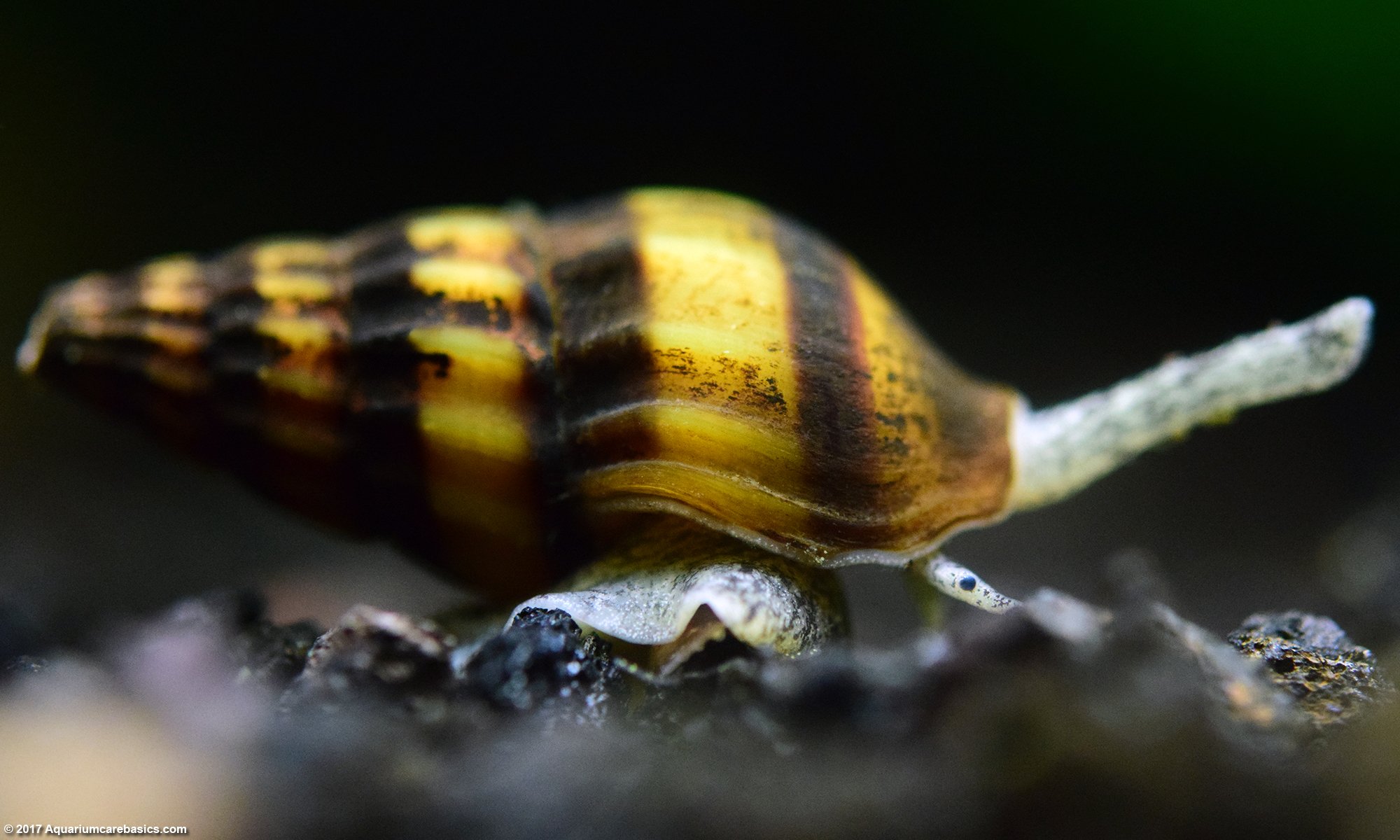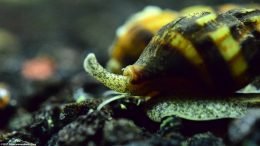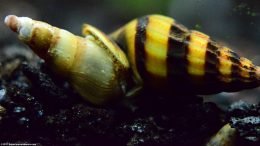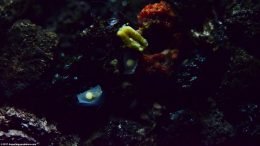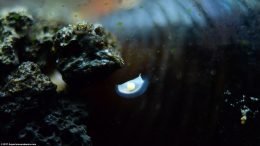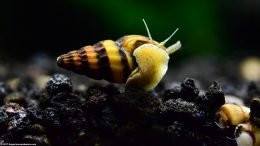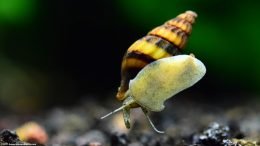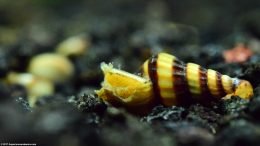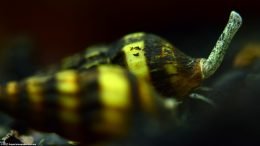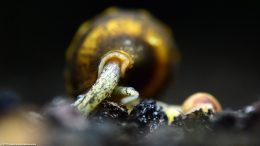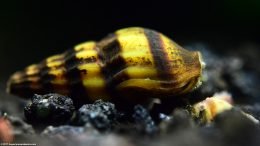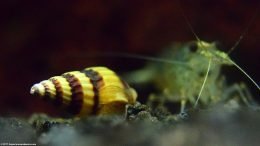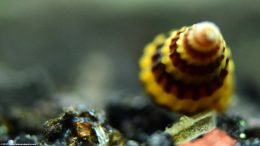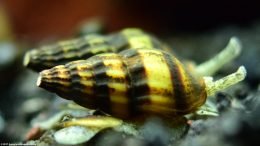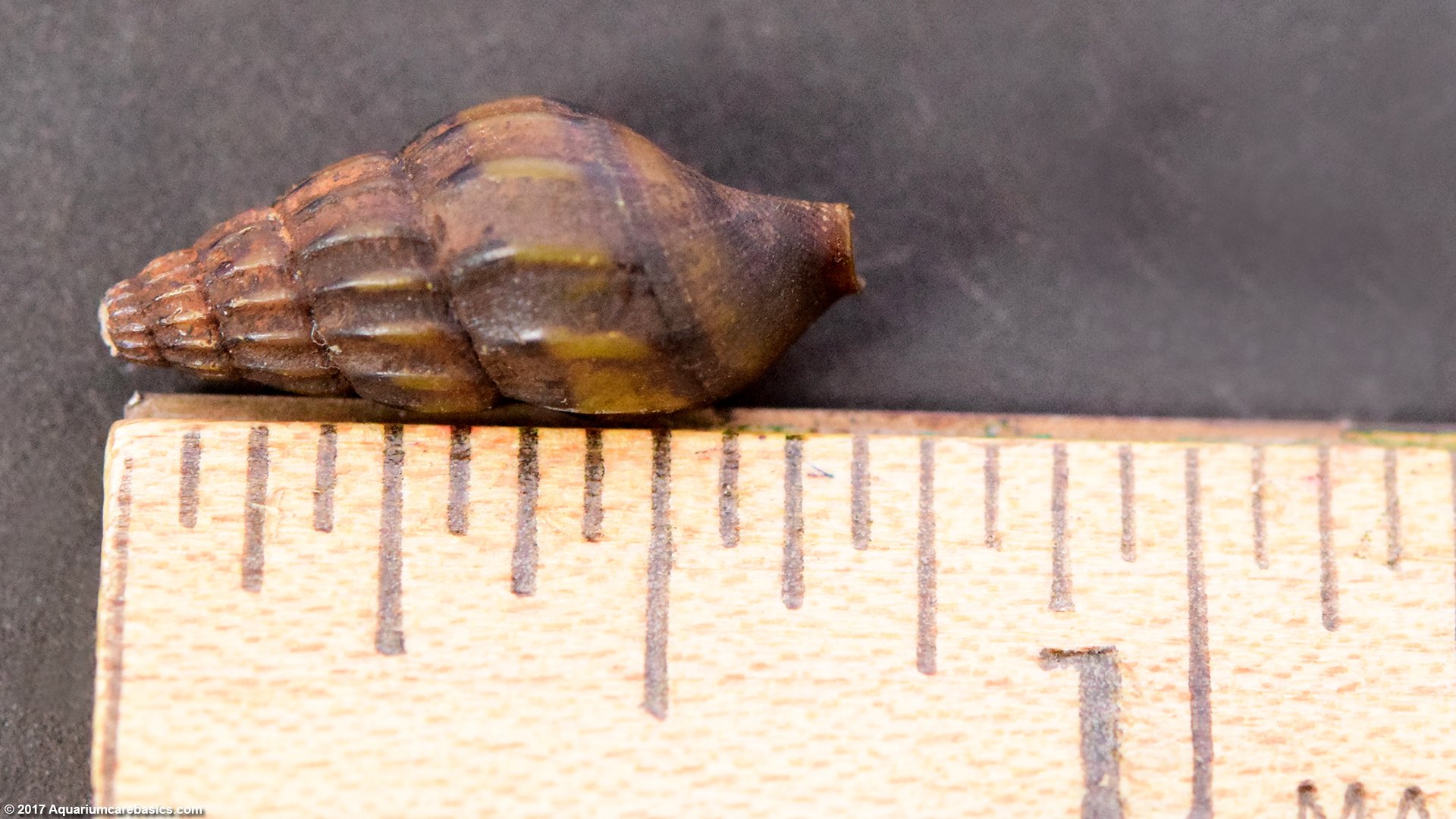An Assassin Snail has become a popular freshwater snail to keep. Assassin Snails have a reputation of being able to help keep populations of some other freshwater snails in check. While keeping a small group of Assassin Snails in a tank may reduce the numbers of Trumpet Snails somewhat, Assassin Snails should not be considered the only solution to snail population explosions. Keeping Trumpet Snail populations in check can also be achieved by removing excess uneaten food from substrate by regular vacuuming.
Questions about Assassin Snail issues commonly involve:
What To Look For When Buying Assassin Snails In Stores
Where Can I See Pictures Of Assassin Snails In Action?
What Are Some Care Issues For Assassin Snails In Freshwater Tanks?
How Big Do Assassin Snails Get?
What Is A Good Tank Size For Assassin Snails In Groups?
How Long Do Assassin Snails Live?
What Do Assassin Snails Feed On?
Do Assassin Snails Eat Live Plants?
Do Assassin Snails Breed And Reproduce In Aquariums?
What Are Good Tank Mates For Assassin Snails In Aquariums?
When Buying An Assassin Snail From Stores
When buying Assassin Snails look for specimens that appear active. An Assassin Snail should be affixed to hard surfaces like aquarium glass or decorations. An Assassin Snail has a cone shaped shell, similar to the shells of Malaysian Trumpet Snails and Rabbit Snails. Assassin Snail shells are gold color with a dark brown stripe wrapping around it from aperture to apex. Their shells should appear free from cracks, splits or other damage and their operculum should be visible on the top of their foot near their backside.
An Assassin Snail body and foot are a light cream color, with darker specks sprinkled throughout. Make sure the Assassin Snail has a complete Proboscis, as well as two tentacles, with an eye near the base on each. Be mindful that snails may be kept in display tanks with rougher fish that may take nips at them. So make sure the snail looks healthy, active and complete.
Avoid buying Assassin Snails from display tanks with an unusual amount of dead or sick looking tank mates, as these can be indications of poor conditions and unhealthy snails. Also avoid buying Assassin Snails if the they appear motionless on the tank bottom or floating as these can be indications the snail is sick or dead. Finally, check to make sure the snail shell isn’t empty.
Assassin Snails, Upclose: 20 Second Video
Gallery Of Assassin Snail Pictures
Assassin Snail Care: Moderate
One of the good things is that Assassin Snail care is no too difficult. Its not as easy as caring for some other types of snails, but as long as water conditions are right, and food is plentiful, Assassin Snail care does not take much effort. The keys are tank size and stability. When adding new Assassin Snails to a tank, go so slowly and gently. Try to make sure the display tank water in the plastic bag matches the new tank water parameters as closely as possible.
Assassin Snail Size. An Assassin Snail found in stores will generally be about 3/4 of an inch long. Under the right conditions, a well fed, mature Assassin Snail can grow to be upwards of 3 inches. So hobbyist need to make sure their tank has sufficient size and capacity to support an adult snail’s life.
Water Parameters: Stability Is Key
An Assassin Snail does not like sudden shifts in water parameters, so make sure the aquarium is well filtered and heated. Also make sure the tank has fully cycled, established itself, and stabilized before introducing them. Its important to keep Ammonia and Nitrite levels at 0 ppm. Its also important to keep Nitrate levels low with regular partial water changes. Along these lines, be careful when adding medications and plant fertilizers. Assassins may be sensitive to some of their ingredients, especially in high concentrations. This is particularly true with Copper. Copper can be fatal to snails, so double check to make sure any additive is snail and shrimp safe.
Aquarium pH: 7.0 – 8.0. Some hobbyists suggest a wider range is possible.
Temperature: 75 – 80 Degrees Fahrenheit.
Hardness: Water should be on the hard side for shell health and growth.
Lighting: Wide range acceptable.
Tank Size & Assassin Snail Habitat
Another issue related to Assassin Snail care has to do with tank size. Its a good idea to keep Assassin Snails in tanks at least 30 gallons in size. An Assassin Snail does best in aquariums with healthy and stable parameters, and larger tanks have a greater capacity to absorb sudden changes and shifts than smaller tanks do. Also, an Assassin Snail feeds on other freshwater snails, so sufficient numbers of edible snails have to be living in the tank as a food source.
Populations of snails upon which Assassin Snails feed tax the capacity of a tank, and smaller tanks can quickly run into water quality troubles when supporting such a population. The growth rate of Assassin Snails must also be considered. As these Assassin Snails mature, they grow in size requiring even more snails to eat. Finally, Assassin Snails are often kept in small groups of five or six, so factor that in as a multiplier when calculating how the population will tax a tank. Smaller tanks are just not the best choice to accommodate the needs of Assassin Snails.
Snail Safety
Other Assassin Snail care issues are related snail safety. Tanks should be covered to the extent possible to reduce the likelihood of their escaping from the tank. Along these lines, think about covering power filter intakes with a sponge pre-filter as snails sometimes get their heads and bodies trapped in the slats. They can get seriously injured, or killed.
Finally, since an Assassin Snail is very active, the habitat should have plenty of places to explore. Substrate should be on the fine side as Assassin Snails like to burrow in search of food. Assassins seem to enjoy travelling up and down algae covered aquarium glass, but well fed Assassins do not seem particularly interested in the algae buildup.
Healthy Assassin Snail Lifespan
A healthy Assassin Snail can live about two years. Lucky snails can live longer if food is plentiful and water conditions are right. Some hobbyists have said their Assassin Snails have lived upwards of five years.
Feeding Assassin Snails & Diets
An Assassin Snail is a carnivore that buries itself in substrate, waiting for something to eat. Assassins are particularly fond of eating Malaysian Trumpet Snails, Ramshorn Snails and pond snails that happen to move by. With these snails, its seems to make little difference whether predator is larger or smaller than prey. Snails without an operculum, like Ramshorn Snails, are particularity vulnerable to attack. But even snails with an operculum, like Trumpet Snails, are no match for a hungry Assassin Snail. Assassin Snails may also be interested in eating snail eggs of the soft variety, but not hard Nerite Snail eggs. Assassins may also be interested in shrimp fry. Assassin Snails do not seem interested in eating their own or their own eggs.
With other snails like mature Mystery Snails, Japanese Trapdoor Snails, Nerite Snails, Rabbit Snails, Gold Inca Snails and Ivory Snails, if prey is larger than predator, then prey is generally safe. Other factors related to this are how hungry the Assassin Snail is and whether there is an abundance of smaller snails to eat. But even though larger snails are generally safe, their young may not be. So keep in mind that small, young snails may be at risk to be eaten by Assassin Snails.
In addition to eating snails, Assassin Snails may be interested in fish flakes, blood worms and other protein rich supplements. In a pinch, Assassin Snails may also be interested in scavenging for meaty debris and dead fish. But all things equal, it seems an Assassin Snail will prefer eating Trumpet Snails over fish flakes any day. Soon after an Assassin Snail is added to a tank, hobbyists may begin to see empty snail shells throughout the tank.
About Live Plants
Live Plants & Assassin Snails In Tanks. An Assassin Snail is a good snail to keep in a planted tank. Assassin Snails are not interested in eating plants at all, so there is no risk the plants will get devoured. And pest snails may enter a tank by hitching a ride on aquarium plants, so Assassin Snails may really help keep their population in check.
Breeding Assassin Snails And Reproduction
Populations of Assassin Snails reproduce in fresh water by laying eggs. Assassin Snails lay one egg at a time. Groups of single eggs often appear in close proximity to one another. Each egg is yellowish and is contained in a translucent rectangular-like enclosure that is affixed to aquarium glass, drift wood, lava rocks or other hard surfaces. After a few days, the yellowish egg will turn light brown. It takes about two months for the eggs to hatch. Thereafter, the baby Assassin Snails will burrow throughout the substrate as it matures. While Assassin Snails do reproduce, they do not have the reputation of being a snail that will overrun a tank.
Common Assassin Snail Tank Mates
Since Assassin Snails are carnivores, care must be taken when selecting tank mates. Assassin Snails seem very comfortable around others of their kind, as well as most other community tank fish. Assassins also seem to get along with peaceful scavengers like Cory Catfish as well as more delicate algae eaters such as Otocinclus Catfish. Assassin Snails seem do blend with small freshwater clams and larger Asian Gold Clams, as well as with Viper Shrimp, Bamboo Shrimp, Amano Shrimp, and Ghost Shrimp. But when keeping Assassin Snails in a tank with freshwater shrimp, make sure the shrimp are larger than the Assassin Snails, and the snails are otherwise well fed, just to be on the safe side.
Avoid keeping Assassin Snails with rough types like Cichlids, aquarium crayfish, Goldfish or any other tank mate that may injure them or eat them. As always, if there are any questions regarding Assassin Snails and tank mate compatibility, be sure to check with the store clerk before purchasing.

